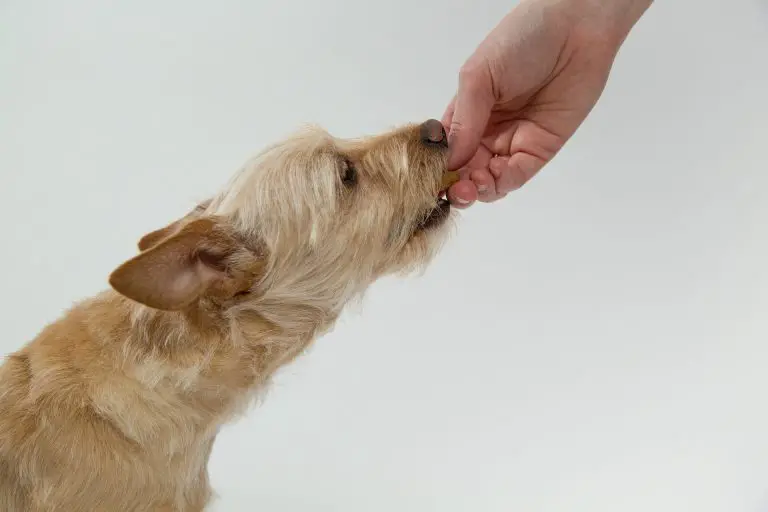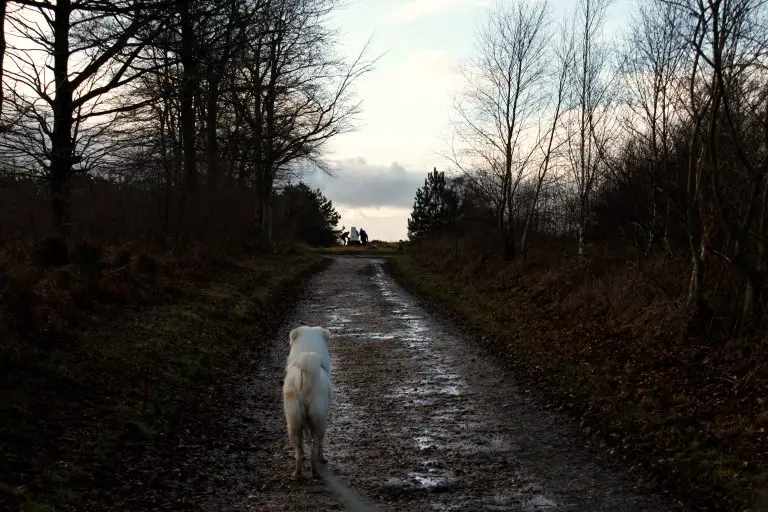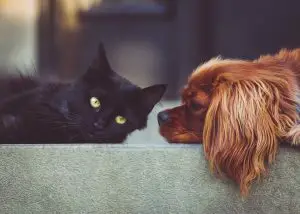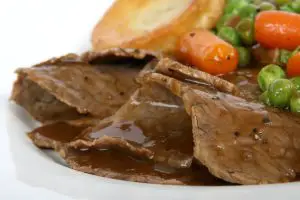Ruff Roaming is supported by its readers. If you make a purchase through one of the affiliate links on this page, we may earn a small commission.
Should I Feed My Dog Before Or After A Walk?

As a dog owner, you always want to do the right thing for your pup, especially when it comes to their health. Therefore you might have wondered what the best thing to do is when it comes to feeding. Should you feed your dog before a walk? Should you feed your dog after a walk? Is there even any difference?
The truth is that doesn’t really matter which you choose. You can feed your dog either before or after a walk, but you must make sure that the walk takes place at least one hour before or after they eat. Doing this will significantly reduce the risk of your dog suffering from gastric dilatation-volvulus (GDV), otherwise known as canine bloat.
What Is Canine Bloat?
Canine bloat is a serious and potentially life-threatening condition that primarily affects large and deep-chested dog breeds. It is characterized by the rapid distention or bloating of the stomach, followed by rotation or twisting of the stomach on its axis. This rotation can lead to obstruction of the blood flow to and from the stomach, causing tissue damage and affecting other organs.
The symptoms of canine bloat can vary but often include:
Distended abdomen: The dog’s belly may appear bloated and tight.
Unsuccessful attempts to vomit: The dog may try to vomit but be unable to bring anything up.
Restlessness and discomfort: The dog may be restless, pacing, or unable to get comfortable.
Excessive drooling and salivation.
Rapid breathing and increased heart rate.
Weakness and collapse in severe cases.

Which Breeds Are More At Risk Of Bloat?
Gastric dilatation-volvulus is more commonly observed in large and giant dog breeds with deep chests. While any dog can potentially develop bloat, certain breeds have a higher predisposition to the condition. Some of the breeds that are considered to be at an increased risk of bloat include:
- Great Dane
- Weimaraner
- Saint Bernard
- Irish Wolfhound
- Standard Poodle
- Boxer
- Doberman Pinscher
- German Shepherd
- Bloodhound
- Akita
However, it’s important to note that bloat can occur in any breed, including small and medium-sized dogs. The list given above is by no means an exhaustive list.
The Best Time To Walk Your Dog
The best time to walk your dog is simply whenever suits you and your dog the best, as long as it’s at least an hour before or after meal time. Doing this dramatically reduces the risk of your dog suffering from canine bloat.
As long as you follow this rule, you can just slot your dog walks into the most convenient spot in your daily routine. We normally feed Flynn a small meal in the morning and a larger one at about 5pm. He then gets a walk at lunchtime and one later in the evening, between and 7pm-10pm depending on what else we’re doing.
Walking your dog is a necessity for a variety of reasons, but by using the information in this post you can time your walks right and keep your dog as healthy and happy as possible.
More Like This...
Walking Dogs In The Rain: A Guide For Wet Weather Walks
Walking your dog is an essential part of their physical and mental well-being, but what...
Why Dogs Are Better Than Cats
Are dogs better pets than cats? It’s the age-old debate that’s divided the population into...
Is Toby Carvery Dog Friendly?
Toby Carvery have over 100 locations across the UK. This article tells you all you...
Are Best Western Hotels Dog Friendly?
Best Western have hundreds of hotels across the UK. This article tells you all you...



